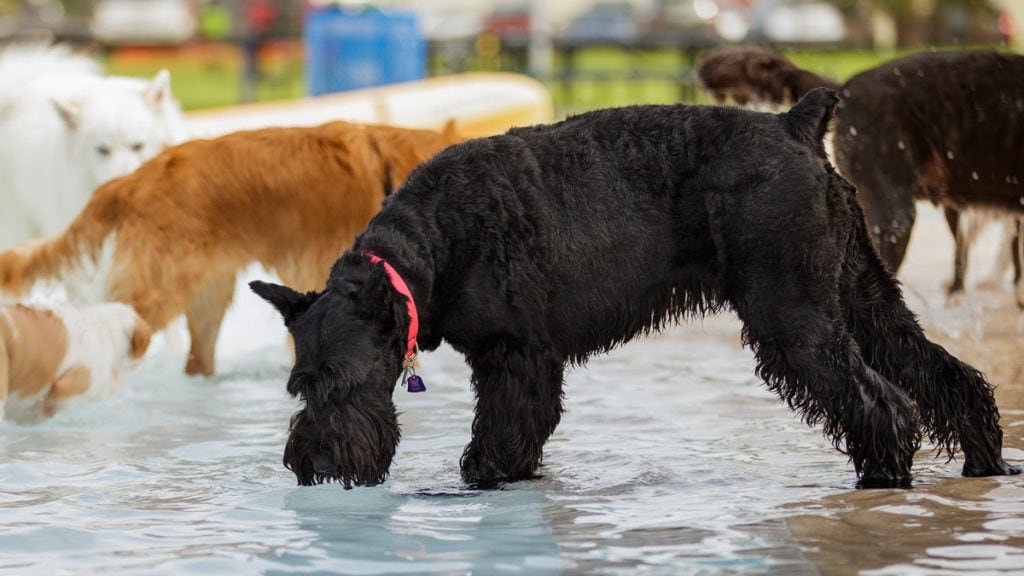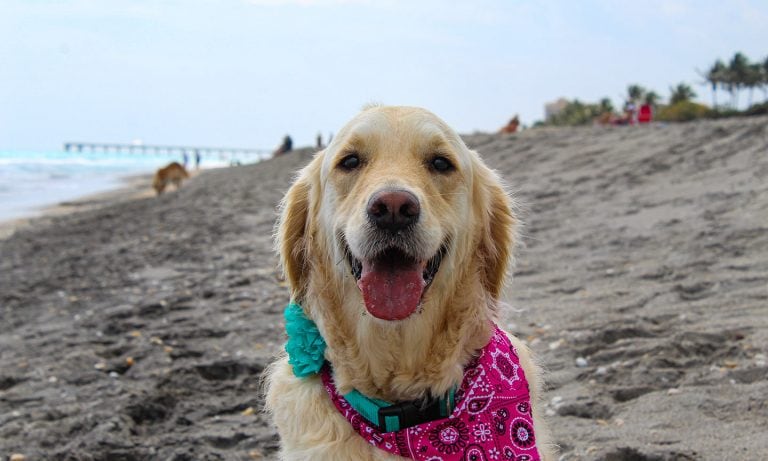You may be your dog’s best friend, but chances are that your pet might want to hang with four-legged pals every now and then. To help him (and you) socialize, an increasing number of pooch playgrounds have been popping up around cities and suburban neighborhoods to offer an alternative to the typical routine. Dogs playing together also provides mental stimulation, improves social skills, and is good exercise! Before you head out with your furry friend, there are a few dog park etiquette tips you need to know to make sure the dog park remains a safe and fun environment for pet play.
6 Dog Park Etiquette Rules to Follow
Lengthen His Leash
Most dog parks are gated so your pet doesn’t need to be on a leash. Giving your pet a little more freedom outside of the house will help prepare him for going to an off-leash dog park for the first time. One strategy to help him learn the difference between running free and running wild is to buy a longer dog leash such as Guardian Gear Cotten Web Training Dog Lead. It stretches 15 to 50 feet (depending on the option you choose) and resists twisting so he can grow comfortable being a little farther away from you on your daily walks.
Bone Up on Behavior
Your pooch isn’t ready for an off-leash dog park until he can follow basic commands, like coming when you ask him. Make the training go faster with the Pro-Training Clicker Deluxe Dog Training Aid. It helps speed up dog behavior training by emitting an audible click that will become a welcoming sound to your pooch when he performs the correct action. Avoid the dog park until your pet follows your commands most of the time; otherwise, his safety could be jeopardized if the pet play becomes too rough and he doesn’t immediately come when you call.
Scout Out the Right Park
Before you bring your pet to play, check out a couple of parks in your area. “I like parks with separate areas for big and little dogs,” says dog trainer Robin Bennett, co-author of Off Leash Dog Play. “Also look for ones with some shade and places that dogs can get away from each other.” She also suggests looking for a park that isn’t very crowded (or, at least, going at a less busy time) and watching other dogs playing to see if they’re behaving. “Dogs need to have loose, wiggly body language at the park,” she says. “Dogs that consistently roll over other dogs, pin dogs to the ground, and harass other dogs are not playing.”
Come Prepared
Once you find a dog park that you think will be the right fit for your pooch, try it out. “Pack water and bags to clean up after your dog,” recommends Bennett. You might also want to bring dog treats like Merrick Power Bites Real Texas Grain-Free Soft & Chewy Dog Treats. You can conveniently carry them in the Outward Hound Treat Pouch.
Keep an Eye Out
Watch your dog’s behavior in the park. In general, try to prevent him from hovering at the gate. “Keep your dog away from the gate when new dogs are coming and going,” suggests Bennett. “The gate is normally the most dangerous spot because of all the high energy [and] new encounters that happen there.” She also suggests giving your dog a break from time to time so he doesn’t get too keyed up and start acting aggressive.
Intervene if Necessary
If you notice that your dog is getting bullied, don’t hesitate to call it a day. You can always try again another time, and putting your dog in a stressful situation defeats the purpose of even being at the dog park. Unfortunately, you can’t count on the owner or the other dog to do the right thing. “Understanding canine body language is the most important part of going to a park,” Bennett says. “You know when your dog is or isn’t having fun.”
Following proper dog park etiquette is the best way to keep dog parks safe and fun for all dogs and their pet parents. If you still find yourself running into dog park problems, check out our troubleshooting guide here.
Share:













